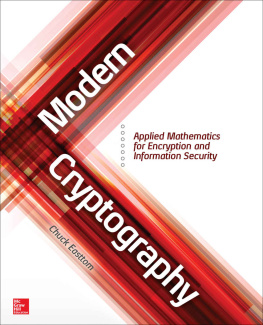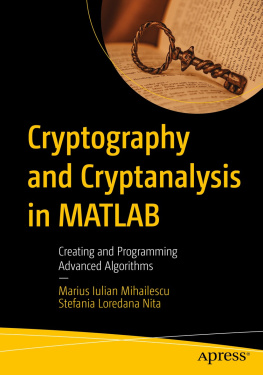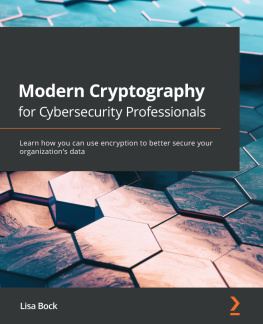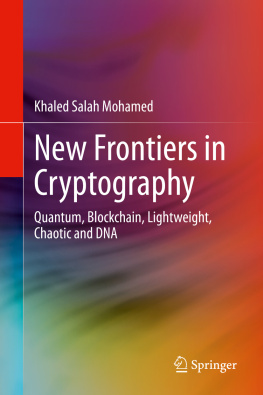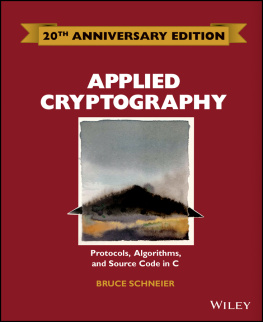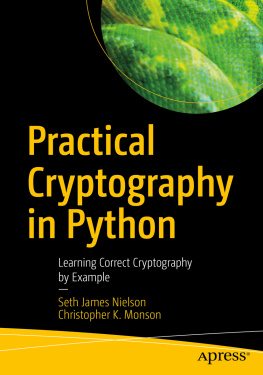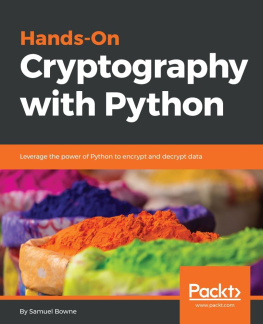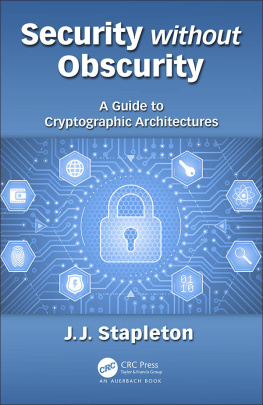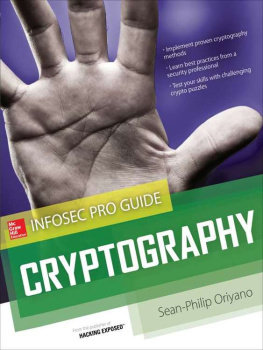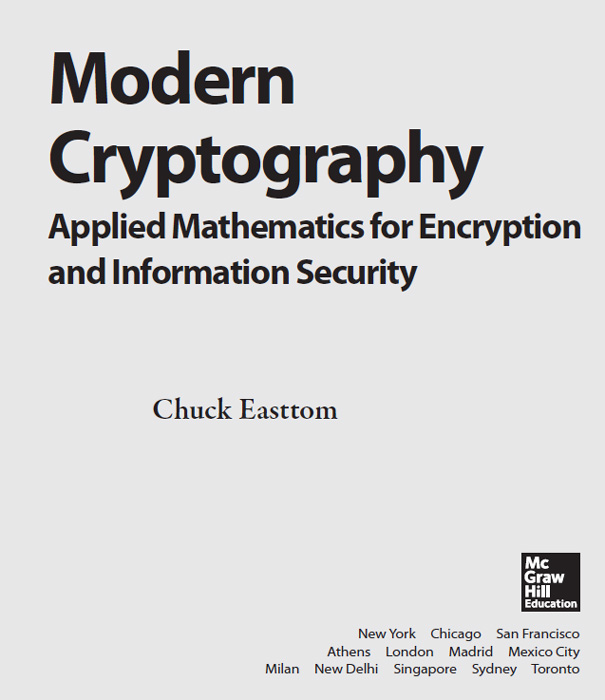Copyright 2016 by McGraw-Hill Education. All rights reserved. Except as permitted under the United States Copyright Act of 1976, no part of this publication may be reproduced or distributed in any form or by any means, or stored in a data base or retrieval system, without the prior written permission of the publisher.
ISBN: 978-1-25-958809-9
MHID: 1-25-958809-2
The material in this eBook also appears in the print version of this title: ISBN: 978-1-25-958808-2, MHID: 1-25-958808-4.
eBook conversion by codeMantra
Version 1.0
All trademarks are trademarks of their respective owners. Rather than put a trademark symbol after every occurrence of a trademarked name, we use names in an editorial fashion only, and to the benefit of the trademark owner, with no intention of infringement of the trademark. Where such designations appear in this book, they have been printed with initial caps.
McGraw-Hill Education eBooks are available at special quantity discounts to use as premiums and sales promotions or for use in corporate training programs. To contact a representative, please visit the Contact Us page at www.mhprofessional.com.
Information has been obtained by McGraw-Hill Education from sources believed to be reliable. However, because of the possibility of human or mechanical error by our sources, McGraw-Hill Education, or others, McGraw-Hill Education does not guarantee the accuracy, adequacy, or completeness of any information and is not responsible for any errors or omissions or the results obtained from the use of such information.
TERMS OF USE
This is a copyrighted work and McGraw-Hill Education and its licensors reserve all rights in and to the work. Use of this work is subject to these terms. Except as permitted under the Copyright Act of 1976 and the right to store and retrieve one copy of the work, you may not decompile, disassemble, reverse engineer, reproduce, modify, create derivative works based upon, transmit, distribute, disseminate, sell, publish or sublicense the work or any part of it without McGraw-Hill Educations prior consent. You may use the work for your own noncommercial and personal use; any other use of the work is strictly prohibited. Your right to use the work may be terminated if you fail to comply with these terms.
THE WORK IS PROVIDED AS IS. McGRAW-HILL EDUCATION AND ITS LICENSORS MAKE NO GUARANTEES OR WARRANTIES AS TO THE ACCURACY, ADEQUACY OR COMPLETENESS OF OR RESULTS TO BE OBTAINED FROM USING THE WORK, INCLUDING ANY INFORMATION THAT CAN BE ACCESSED THROUGH THE WORK VIA HYPERLINK OR OTHERWISE, AND EXPRESSLY DISCLAIM ANY WARRANTY, EXPRESS OR IMPLIED, INCLUDING BUT NOT LIMITED TO IMPLIED WARRANTIES OF MERCHANTABILITY OR FITNESS FOR A PARTICULAR PURPOSE. McGraw-Hill Education and its licensors do not warrant or guarantee that the functions contained in the work will meet your requirements or that its operation will be uninterrupted or error free. Neither McGraw-Hill Education nor its licensors shall be liable to you or anyone else for any inaccuracy, error or omission, regardless of cause, in the work or for any damages resulting therefrom. McGraw-Hill Education has no responsibility for the content of any information accessed through the work. Under no circumstances shall McGraw-Hill Education and/or its licensors be liable for any indirect, incidental, special, punitive, consequential or similar damages that result from the use of or inability to use the work, even if any of them has been advised of the possibility of such damages. This limitation of liability shall apply to any claim or cause whatsoever whether such claim or cause arises in contract, tort or otherwise.
This book is dedicated to the men and women working in military and intelligence agencies who implement cryptography, work with cryptanalysis, and apply cryptography to computer security.
About the Author
Chuck Easttom has more than 20 years of experience working in various aspects of the computer industry. For the past 15 years, he has focused primarily on computer security. He has wide experience in security, penetration testing, and forensics, but his favorite security topic is cryptography. Easttom has taught cryptography to U.S. government personnel, Department of Defenserelated personnel, and friendly foreign governments. Of his six computer science patents, one is a method of distributed steganography. He has published papers on cryptography, and his various computer security books always include chapters on cryptography. He is a frequent speaker on cryptographic topics including RSA encryption, cryptographic backdoors, and cryptanalysis.
Easttoms security-related background includes 30 industry certifications, work with various vendors in the creation or revision of their certification tests, years of hands-on direct experience, and extensive teaching experience.
Contents at a Glance
Contents
Acknowledgments
Writing a book is an arduous task. It is always my goal to make each book better than the last. I have to thank several people for aiding me in this ask. First, the very helpful editorial staff at McGraw-Hill Professional. They were simply wonderful to work with! And their commitment to quality is unsurpassed in the publishing world. The team included a copy editor and technical editor, both working to make sure no mistakes crept into the book. The McGraw-Hill Professional team included Meghan Manfre, Amy Stonebraker, and LeeAnn Pickrell. The technical editor did an excellent job of ensuring that all the details were technically correct, and nothing was overlooked. Without all their help, I could not have written this book. Finally, I must thank my wife, Teresa, who was so patient when I spent long hours working on this book.
Introduction
There are a number of cryptography books on the market today. Many are very well written. I would know; I have an extensive cryptography library and have read most of the books on the market. However, most of these books suffer from one common issue: they assume the reader has a solid mathematical background and approach cryptography from that perspective. It is also sometimes the case that cryptography authors write as if they were speaking to experienced cryptographers, or at least to those with a basic working knowledge.
This book was designed to bring cryptography to the general security community. You need not have any mathematics background beyond basic secondary school algebra. The book will cover the math you need. Furthermore, the book includes chapters on topics rarely covered in cryptography texts: cryptographic backdoors, military cryptography, and applied cryptography.
This book makes an excellent Introduction to Cryptography textbook for students taking a first course in cryptography. It is also appropriate for computer security professionals who wish to self-study and gain a working knowledge of cryptography. If you are reading this as self-study, pause at the end of each chapter, use the review questions, and ensure that you fully mastered the critical topics before proceeding.
The book is really a journey through cryptography, starting with historical cryptography and then moving into the mathematical foundations necessary to understand modern cryptography. The book then moves on to the symmetric and asymmetric algorithms used today. It also includes chapters on Secure Sockets Layer (SSL), cryptanalysis, military applications for cryptography, and the future of cryptography.

